1990
The Executive Yuan instructed the Ministry of Education and the Overseas Chinese Affairs Commission to study the feasibility of establishing Ji-nan University in Taiwan.
♦ 1st Preparatory Office Director: January 30, 1992 – January 31, 1994
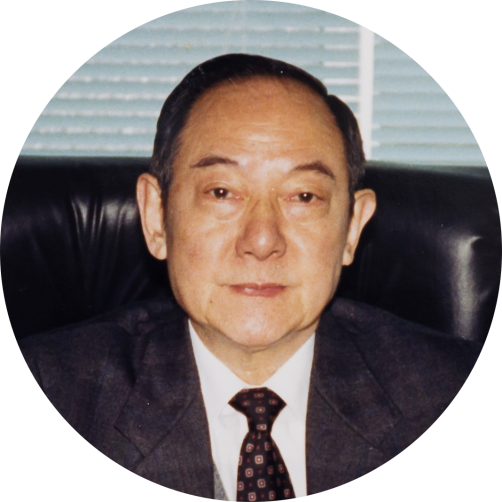 Director Yen Ping-Yu earned Bachelor's and Master's degrees from National Taiwan Normal University, studied in the United States and obtained a Ph.D. from Loyola University Chicago. He previously served as a professor and director of the Audiovisual Center at the College of Education, National Taiwan Normal University, the first president of Hsinchu Teachers College, and a counselor at the Ministry of Education. He initiated the establishment of the Taiwan Association of Teacher Education and received the highest honor in the education field, the Muduo (Wooden Bell) Award.
Director Yen Ping-Yu earned Bachelor's and Master's degrees from National Taiwan Normal University, studied in the United States and obtained a Ph.D. from Loyola University Chicago. He previously served as a professor and director of the Audiovisual Center at the College of Education, National Taiwan Normal University, the first president of Hsinchu Teachers College, and a counselor at the Ministry of Education. He initiated the establishment of the Taiwan Association of Teacher Education and received the highest honor in the education field, the Muduo (Wooden Bell) Award.
From 1992 to 1993, Dr. Yen Ping-Yu was appointed by the Ministry of Education to serve as the convener of the planning team for the establishment of National Chi Nan University. He led the team in selecting the location for the university and acquiring the land, as well as implementing the initial planning for the establishment of the university.
♦ 2nd Preparatory Office Director: February 1, 1994 – June 30, 1995
♦ 1st President: July 1, 1995 – June 30, 1999
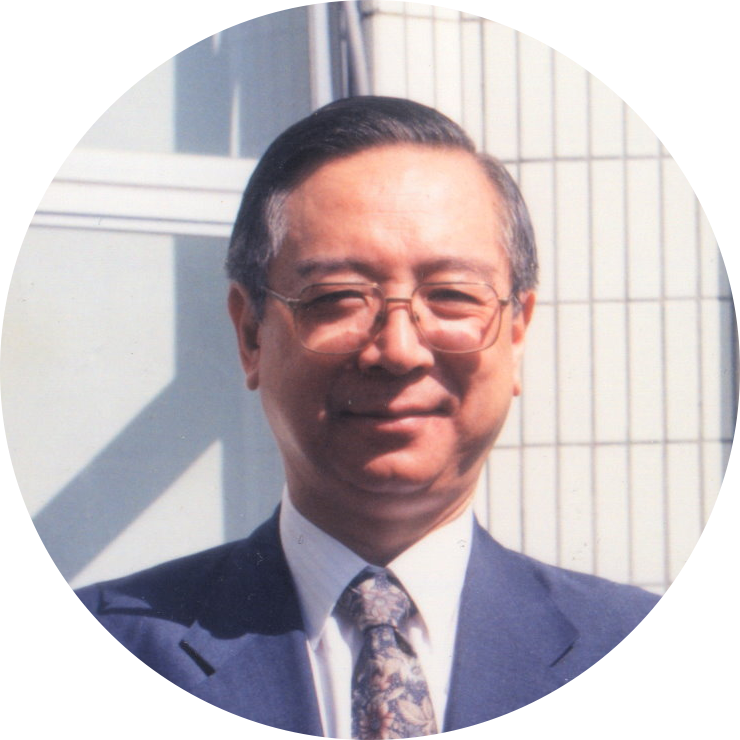 President Yuen Song-Xi earned Bachelor's and Master's degrees in Political Science from National Taiwan University. He was a professor in the Department of Political Science at National Taiwan University for over thirty years. He has held positions such as the director of the Department of Political Science and the dean of the College of Law at National Taiwan University, as well as the Director-General of the Higher Education Department and the Deputy Minister of Transportation of the Ministry of Education. His academic expertise lies in political science theory and methodology, and he is particularly renowned for his research on the political and socialization of children and adolescents in our country. He currently holds the title of honorary professor and concurrent professor in the Department of Political Science at National Taiwan University.
President Yuen Song-Xi earned Bachelor's and Master's degrees in Political Science from National Taiwan University. He was a professor in the Department of Political Science at National Taiwan University for over thirty years. He has held positions such as the director of the Department of Political Science and the dean of the College of Law at National Taiwan University, as well as the Director-General of the Higher Education Department and the Deputy Minister of Transportation of the Ministry of Education. His academic expertise lies in political science theory and methodology, and he is particularly renowned for his research on the political and socialization of children and adolescents in our country. He currently holds the title of honorary professor and concurrent professor in the Department of Political Science at National Taiwan University.
President Yuen Song-Xi continued the university's planning work and subsequently assumed the position of the first president of National Chi Nan University. During his tenure, he finalized the university's name and completed the initial infrastructure of the campus, including the Administration Building, Multi-Purpose Classroom Building, the College of Science and Technology Buildings, student dormitories, canteen, and single and family dormitories. He also improved the research system, the administrative system, the establishment of departments and graduate institutes, as well as personnel appointments.
♦ 2nd President: July 1, 1999 – November 30, 1999
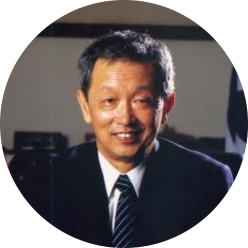 President Lee Chia-Tung graduated from the Department of Electrical Engineering at National Taiwan University. He obtained his Master's and Ph.D. degrees in Electrical Engineering and Computer Science from the University of California, Berkeley, and later worked in the United States. Upon returning to Taiwan, he served as the Dean of the College of Engineering and the Dean of Academic Affairs at Tsinghua University. In March of 1993, he assumed the role of acting president, concurrently serving as both the president and the Dean of Academic Affairs. In January of the following year, he stepped down from the position and took over as the president of Providence University, where he was ranked first among the most respected university presidents in the country. In July of 1999, he became the second president of our university.
President Lee Chia-Tung graduated from the Department of Electrical Engineering at National Taiwan University. He obtained his Master's and Ph.D. degrees in Electrical Engineering and Computer Science from the University of California, Berkeley, and later worked in the United States. Upon returning to Taiwan, he served as the Dean of the College of Engineering and the Dean of Academic Affairs at Tsinghua University. In March of 1993, he assumed the role of acting president, concurrently serving as both the president and the Dean of Academic Affairs. In January of the following year, he stepped down from the position and took over as the president of Providence University, where he was ranked first among the most respected university presidents in the country. In July of 1999, he became the second president of our university.
President Lee Chia-Tung established a financial system and led the university's stable development during his tenure. He developed the nation's only network voice messaging and English interactive audiovisual teaching system. He also implemented an English proficiency test for freshmen to strengthen English education. On September 21, 1999, the devastating Jiji earthquake occurred, causing severe damage to the campus. To ensure faculty and students' safety and educational rights, President Lee Chia-Tung contacted personnel from National Taiwan University and arranged for the temporary relocation of faculty and students to National Taiwan University. On October 13th, they officially resumed classes at National Taiwan University.
♦ Interim President: December 1, 2000 – December 6, 2000
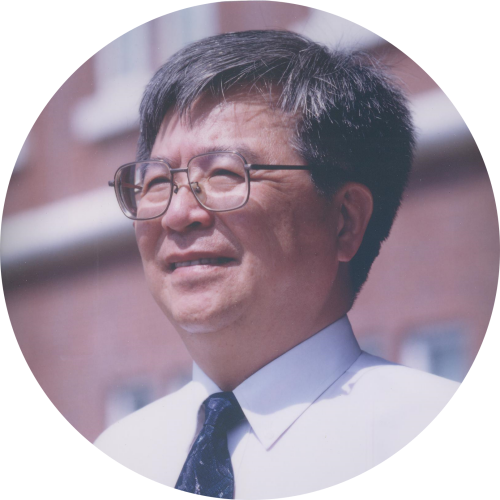 Acting President Hsu Hong received his Bachelor's, Master's, and Ph.D. degrees in History from National Taiwan University. In 1985, he became a professor and the head of the Department of History at National Taiwan University. In 1989, he established the Institute of Art History and served as its director. He also participated in the founding of the Hong Kong University of Science and Technology in 1991 and established the Department of History at National Chi Nan University, where he served as the director, as well as the Dean of Academic Affairs and the Acting President. He has also been a professor in the Department of History at Soochow University and a guest professor at Nan Kai University of Technology. For many years, he has been actively promoting research on the Ming and Qing dynasties in Taiwan.
Acting President Hsu Hong received his Bachelor's, Master's, and Ph.D. degrees in History from National Taiwan University. In 1985, he became a professor and the head of the Department of History at National Taiwan University. In 1989, he established the Institute of Art History and served as its director. He also participated in the founding of the Hong Kong University of Science and Technology in 1991 and established the Department of History at National Chi Nan University, where he served as the director, as well as the Dean of Academic Affairs and the Acting President. He has also been a professor in the Department of History at Soochow University and a guest professor at Nan Kai University of Technology. For many years, he has been actively promoting research on the Ming and Qing dynasties in Taiwan.
As of March 8, 2000, the campus of National Chi Nan University was rebuilt after the Jiji earthquake, allowing faculty and students to return to the Puli campus for classes. At the same time, President Hsu Hong led faculty and students in actively assisting in the post-disaster reconstruction efforts in surrounding affected areas. In the same year, the university held its first-anniversary celebration and organized a fun run as part of the celebration, aiming to bring National Chi Nan University closer to the local community.
♦ 3rd & 4th President: December 7, 2000 – May 19, 2008
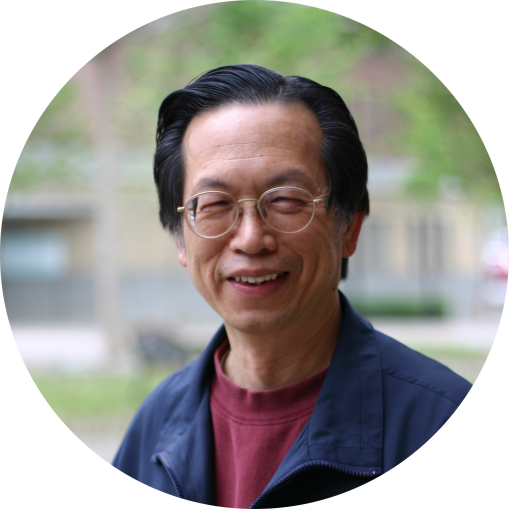 President Chang Jin-Fu received a Bachelor's degree in Electrical Engineering from National Taiwan University and a Ph.D. in Electrical Engineering and Computer Science from the University of California, Berkeley. Before assuming the presidency, he served as a professor and department chair in the Department of Electrical Engineering at National Taiwan University, Director of Academic Affairs at National Central University, Convener of the Aerospace Engineering Division of the National Science and Technology Council, Director of the Technology Advisory Office at the Ministry of Education, and Vice Chairman of the National Science and Technology Council.
President Chang Jin-Fu received a Bachelor's degree in Electrical Engineering from National Taiwan University and a Ph.D. in Electrical Engineering and Computer Science from the University of California, Berkeley. Before assuming the presidency, he served as a professor and department chair in the Department of Electrical Engineering at National Taiwan University, Director of Academic Affairs at National Central University, Convener of the Aerospace Engineering Division of the National Science and Technology Council, Director of the Technology Advisory Office at the Ministry of Education, and Vice Chairman of the National Science and Technology Council.
During his tenure, many campus infrastructure projects were completed, including the completion of the College of Humanities in 2005, the Library and Information Building in 2006, the opening ceremony of the Entrepreneurship Incubation Center on May 2, 2007, and the completion of the College of Management in 2007. He also promoted the construction of new faculty and graduate student dormitories and the groundbreaking for the Sports and Health Center on May 23, 2007. In 2005, he initiated the Spring Hike tradition at National Chi Nan University and actively planned for the expansion of software and equipment, as well as the establishment of new campus departments. He also secured the Ministry of Education Teaching Excellence Project subsidy to elevate the university’s quality of instruction.
♦ 5th President: December 9, 2008 – December 8, 2012
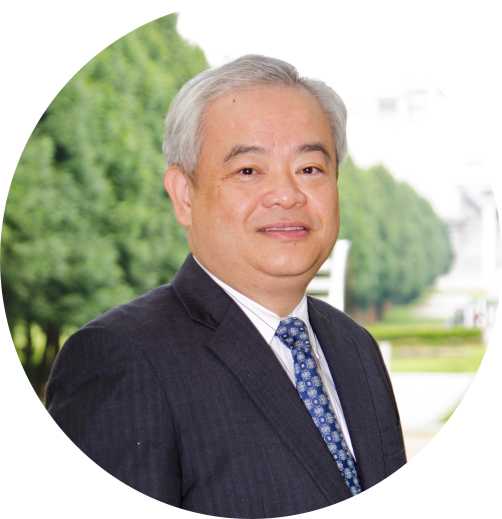 President Sheu Her-Jiun earned a Bachelor's degree in Management Science from National Chiao Tung University, and Master's and Ph.D. degrees from New York University. His main expertise lies in corporate finance, derivative financial products, public administration and management, and performance evaluation. He has served as an associate professor, professor, dean of the College of Management Sciences, and vice president of National Chiao Tung University. During his tenure, he was seconded to National Chi Nan University as the dean of the College of Management and later became the 5th president of National Chi Nan University. After his term, he was appointed as the deputy mayor of Tainan City and currently serves as a distinguished professor at Ming Chuan University.
President Sheu Her-Jiun earned a Bachelor's degree in Management Science from National Chiao Tung University, and Master's and Ph.D. degrees from New York University. His main expertise lies in corporate finance, derivative financial products, public administration and management, and performance evaluation. He has served as an associate professor, professor, dean of the College of Management Sciences, and vice president of National Chiao Tung University. During his tenure, he was seconded to National Chi Nan University as the dean of the College of Management and later became the 5th president of National Chi Nan University. After his term, he was appointed as the deputy mayor of Tainan City and currently serves as a distinguished professor at Ming Chuan University.
During his tenure, President Sheu promoted intercollegiate exchanges, industry-academia collaborations, and the establishment of new departments. He facilitated the professionalization of administrative organizations and established the Office of International Affairs. He vigorously promoted the recruitment of students from Hong Kong and Macau. On December 3, 2011, the Alumni Association was established to strengthen the connection between alumni and the university. In terms of infrastructure development, several projects were initiated, including the Sports and Health Center, the Student Activity Center, and graduate student dormitories. Campus planning efforts included the establishment of dedicated motorcycle lanes. The medical center was outsourced to the Puli Branch of Taichung Veterans General Hospital, providing convenient medical services to students and faculty with injuries or medical needs.
♦ Interim President: May 20, 2008 – December 8, 2008
♦ 6th & 7th President: December 9, 2012 – January 31, 2021
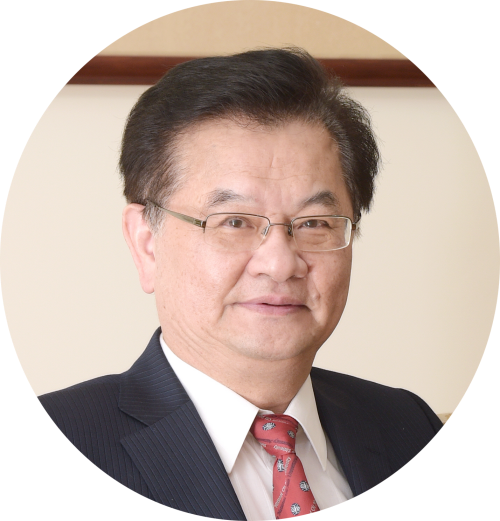 President Su Yulong received a Bachelor's degree in Chemistry from National Taiwan University, a Master's degree in Chemistry from National Taiwan Normal University, and a Ph.D. from Ohio State University. He served as an associate researcher in the Department of Chemistry at Princeton University and later as a professor in the Department of Chemistry at National Taiwan University. He was also a representative in the National Assembly for two terms and served as the head of the Department of Applied Chemistry at National Chi Nan University in 1998. He subsequently assumed various managerial positions at the university. Currently, he serves as the director of the University Social Responsibility Promotion Center, a board member of the Association of National Universities and Colleges, an executive director of the College Entrance Examination Center, and a board member of the National Taiwan University Alumni Association.
President Su Yulong received a Bachelor's degree in Chemistry from National Taiwan University, a Master's degree in Chemistry from National Taiwan Normal University, and a Ph.D. from Ohio State University. He served as an associate researcher in the Department of Chemistry at Princeton University and later as a professor in the Department of Chemistry at National Taiwan University. He was also a representative in the National Assembly for two terms and served as the head of the Department of Applied Chemistry at National Chi Nan University in 1998. He subsequently assumed various managerial positions at the university. Currently, he serves as the director of the University Social Responsibility Promotion Center, a board member of the Association of National Universities and Colleges, an executive director of the College Entrance Examination Center, and a board member of the National Taiwan University Alumni Association.
During his term as interim president, President Su continued to promote the infrastructure development initiated by the previous president and also advanced international student recruitment efforts. After 2012, he actively sought teaching and research project funding for initiatives such as the University Social Responsibility Project and the Higher Education Sprout Project. Regarding student and academic activities, he devoted himself to sports and local co-creation, organizing large-scale exhibitions in collaboration with external resources, promoting foreign language courses, and actively engaging in international exchanges. Interaction between the university and the local community was also a focus for President Su, integrating social participation into the learning curriculum and practicing social responsibility.
♦ 8th President: February 1, 2021 – Present
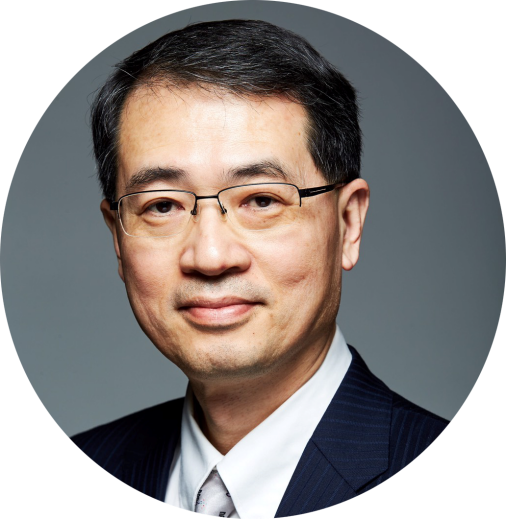 President Dong-Sing Wuu earned a Bachelor's degree in Electrical Engineering from National Sun Yat-sen University, and Master's and Ph.D. degrees in Electrical Engineering from National Sun Yat-sen University. Since March 1991, he has worked as an engineer at the Industrial Technology Research Institute. In August 1995, he became an associate professor and later a professor at Da-Yeh University. On February 1, 2001, he was hired as a professor in the Department of Materials Engineering at National Chung Hsing University, where he has held various positions, including Director of the Engineering Science Center, department chair, and vice dean. He has also served as the 6th and 7th president of Dayeh University, possessing comprehensive administrative experience and qualifications. His management philosophy emphasizes "student-centeredness" and "respecting faculty," aiming to leverage his administrative and operational experience to lead National Chi Nan University towards further innovation.
President Dong-Sing Wuu earned a Bachelor's degree in Electrical Engineering from National Sun Yat-sen University, and Master's and Ph.D. degrees in Electrical Engineering from National Sun Yat-sen University. Since March 1991, he has worked as an engineer at the Industrial Technology Research Institute. In August 1995, he became an associate professor and later a professor at Da-Yeh University. On February 1, 2001, he was hired as a professor in the Department of Materials Engineering at National Chung Hsing University, where he has held various positions, including Director of the Engineering Science Center, department chair, and vice dean. He has also served as the 6th and 7th president of Dayeh University, possessing comprehensive administrative experience and qualifications. His management philosophy emphasizes "student-centeredness" and "respecting faculty," aiming to leverage his administrative and operational experience to lead National Chi Nan University towards further innovation.
Since assuming office, President Dong-Sing Wuu has actively promoted cooperation between universities and signed agreements for intercollegiate course selection. He has also launched a vision plan, encouraging economically disadvantaged students to enroll in local national universities by providing tuition fee waivers and scholarships. In 2022, the Shui Sha Lian College was established, nurturing local talent for regional revitalization in collaboration with Puli. The Central Taiwan Outdoor Education Center was opened the same year, cultivating local sports talents and integrating tourism and sports industries for vibrant development. To connect the campus with the local community, National Chi Nan University Bike Sharing was implemented, providing a convenient and environmentally friendly transportation option for students and the public. President Dong-Sing Wuu also aims to strengthen local healthcare services, and therefore, a Department of Nursing will be established in the 2023 – 2024 academic year in collaboration with Puli Christian Hospital, solidifying the university's social responsibility.
 "Chi Nan" is derived from the Book of Documents, "Yu Gong": "The east extends to the sea, the west borders the shifting sands, reaching far and wide, its reputation resounds throughout the four seas" Originally had the wish to to spread Chinese culture to various parts of the world.
"Chi Nan" is derived from the Book of Documents, "Yu Gong": "The east extends to the sea, the west borders the shifting sands, reaching far and wide, its reputation resounds throughout the four seas" Originally had the wish to to spread Chinese culture to various parts of the world.
Jinan Academy, established in Nanjing in 1906, and Jinan University, which was later restructured in Shanghai, both focus on cultivating talents from overseas Chinese community, In 1984, Chairman Bo-Ping Lei of the Alumni Association of Jinan University in Southern California, attended the Overseas Chinese Affairs Conference of the Presidential Office and proposed to resume the school in Taiwan.after many efforts, the National Chi Nan University was established in 1995, we look forward to cultivate educational talents, deeply cultivate overseas Chinese education,and with the word "international", embrace the future and overlook the world.
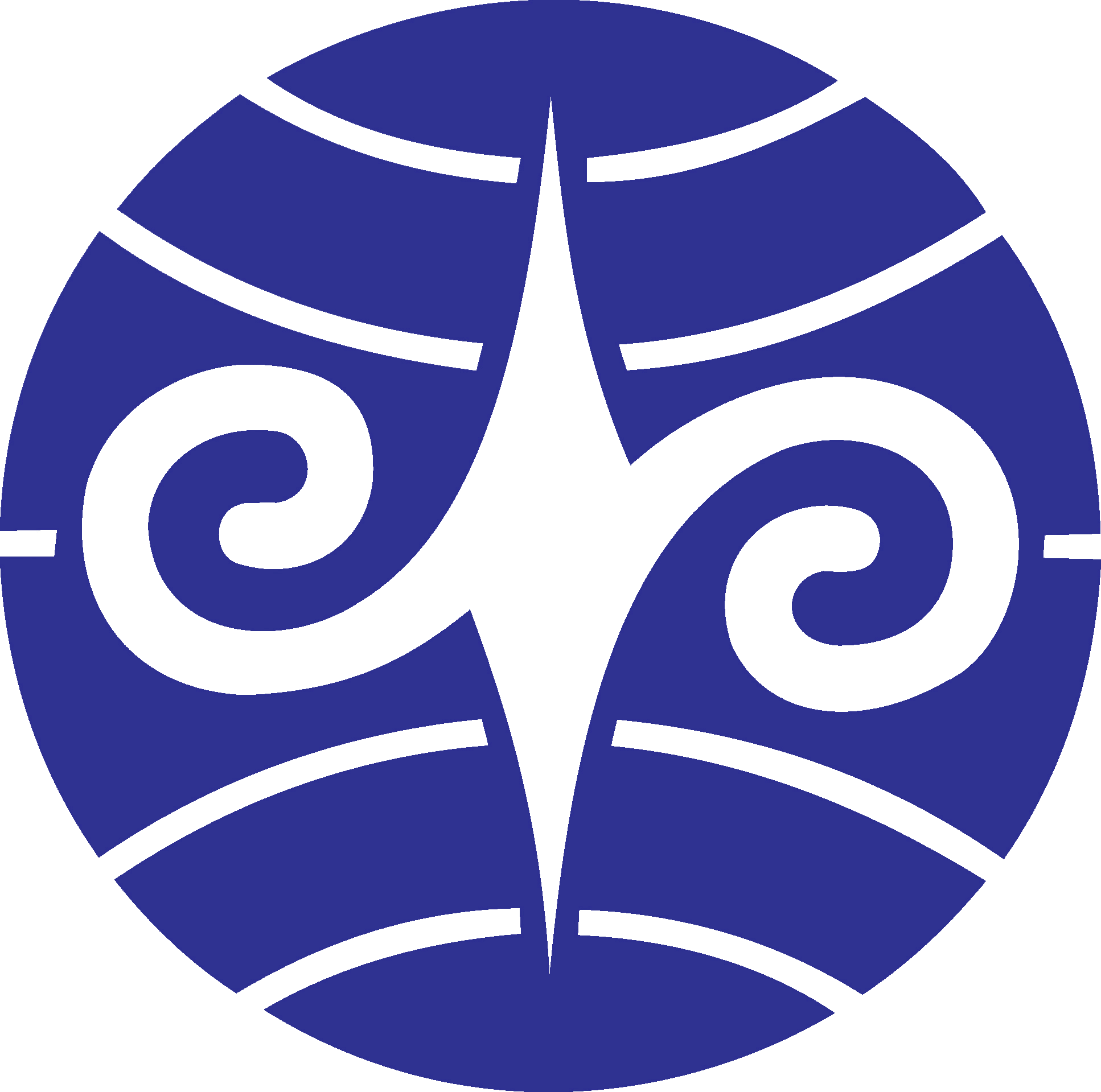 The school emblem combines the initials "C" and "N" of Chi Nan, incorporating traditional symmetrical patterns and a representation of the Earth. It symbolizes the functions of overseas Chinese education, overseas support, self-improvement, and the spirit of balance and harmony on Earth. It embodies the school's purpose, educational philosophy, and resonates with the school motto "Sincerity, Simplicity, Perseverance, and Practicality."
The school emblem combines the initials "C" and "N" of Chi Nan, incorporating traditional symmetrical patterns and a representation of the Earth. It symbolizes the functions of overseas Chinese education, overseas support, self-improvement, and the spirit of balance and harmony on Earth. It embodies the school's purpose, educational philosophy, and resonates with the school motto "Sincerity, Simplicity, Perseverance, and Practicality."
🔹 Strengthening human resource development
🔹 Enhancing the functions of overseas Chinese education
🔹 Promoting international exchanges
🔹 Balancing regional development
Sincerity and Simplicity, Perseverance and Practicality
Sincerity and Simplicity guide one's character, while Perseverance and Practicality uphold one's aspirations.
To pursue knowledge and cultivate oneself is the essence of Perseverance.
To apply knowledge to serve society is the embodiment of Practicality.
The name of our university can be traced back to the establishment of “Jinan Academy" in Nanjing in the 32nd year of the Guangxu era (1906). It was founded by the Governor of Liangjiang, In the 16th year of the Republic of China, it was renamed National Jinan University in Shanghai. During the Sino-Japanese War, it was temporarily relocated to Jianyang, Fujian, and then returned to Shanghai in June of the 35th year. The goal of the university was to mainly admit overseas Chinese students and spread the moral standards and cultural education of the Chinese nation to various overseas regions, such as Nanyang.
In the 38th year, when the government of the Republic of China relocated to Taiwan, there were requests from the faculty and students of the original Jinan University to reestablish the university in Taiwan. Through communication and coordination between the Overseas Chinese Affairs Commission and the Ministry of Education, efforts were made to promote the reestablishment movement from political and educational perspectives, but they were not successful. It wasn't until 1990 that the Ministry of Education, in order to alleviate the competition for higher education admissions and balance regional development, proposed the establishment of Chi Nan University.
Our university upholds the motto of "Sincerity, Simplicity, Perseverance, and Practicality" and embodies the spirit of "Humanities as the foundation, Science and Technology for practical use," reflecting the true essence of Chinese culture, "adhering to the middle way and pursuing the ultimate goodness." The founding philosophy of the university aims to strengthen talent cultivation, enhance overseas Chinese education, balance regional development, and promote international academic exchanges. In addition to fundamental academic research, emphasis is placed on Southeast Asian regional studies, industry-academia collaboration, outreach services, and the cultivation of talents in the overseas Chinese community.
In July 1990, the Executive Yuan instructed the Ministry of Education and the Overseas Chinese Affairs Commission to study the possibility of establishing Ji-nan University in Taiwan. After conducting the research, it was suggested to admit both overseas Chinese students and local students to facilitate cultural exchange. In March 1991, a planning group was established, and in September of the same year, the Executive Yuan approved the establishment of "National Chi Nan University." On January 30, 1992, the "Preparatory Office for National Chi Nan University" was established, and in February of the same year, the Ministry of Education selected Taomi Pit, Puli Township, Nantou County, as the site for the university.
Originally, the Preparatory Office was located in Taipei, but preparations for the campus construction were carried out. In January 1994, it was relocated to the premises of the Provincial Puli High School (now Chi Nan High School). Subsequently, efforts were made to establish academic departments and recruit personnel.
At the initial establishment of the university, the name was originally intended to be "National Chi Nan University." However, considering that it might cause confusion with the existing Jinan University in Guangzhou internationally, after discussions with various stakeholders invited by the Ministry of Education, the university was officially renamed "National Chi Nan International University" in April 1995. It was formally established on July 1 of the same year.
The Executive Yuan instructed the Ministry of Education and the Overseas Chinese Affairs Commission to study the feasibility of establishing Ji-nan University in Taiwan.
The Ministry of Education established the "National Chi Nan University Planning Group" and invited Dr. Yan Bingyi to serve as the convener. The Executive Yuan approved the establishment of National Chi Nan University.
On January 30, the Preparatory Office for National Chi Nan University was established, and Dr. Yan Bingyi was appointed as the director of the preparatory office. In February, the site for the university was announced as Taomi Pit, Puli Township, Nantou County.
On January 19, the Preparatory Office relocated and used the facilities of the Provincial Puli Senior High School as its office. On February 1, Deputy Minister of Education Yuan Songxi was appointed as the director of the Preparatory Office for National Chi Nan University.
On April 7, the Ministry of Education approved the renaming of the university to "National Chi Nan International University." On July 1, the university was officially established, and Yuan Songxi, the former director of the Preparatory Office, was appointed as the first president. In the first year, five graduate institutes were established, including Chinese Language and Literature, International Business, Comparative Education, Economics, and Social Policy and Social Work. A total of 76 students were admitted as the first batch of graduate students and registered on September 30.
In January, the administration building was completed, and all faculty and staff officially began working on campus. The first batch of undergraduate students began there studies on campus. On October 7, the "Campus Inauguration and Opening Ceremony for the 85th Academic Year" was held, which became the founding day and annual celebration day of the university. The university took over the mission of the Overseas Joint Admissions.
Comprehensive Teaching Building completed construction. The first issue of the "Journal of Chi Nan University" was published. The first student publication of the Chinese Department, "Yunhu," was established.
On September 21, the 921 earthquake occurred at 1:47 am, causing damage to the university buildings and disrupting external communication. Students and faculty eagerly awaited rescue. President Li Jiatong decided to relocate to National Taiwan University, and classes resumed on October 13.
Campus reconstruction was completed, and on March 8, students and faculty moved back to Puli. The first campus fun run event for the university's anniversary was held.
On December 13, Puli High School was renamed as "National Chi Nan International University Affiliated Senior High School," and an unveiling ceremony was held.
On October 23, the earth moving ceremony was held for the Library and Information Building.
The university celebrated its 10th anniversary with the first campus-wide "Journey for Chi Nan - 'Sending Love to Taomi'" spring hiking event. The College of Humanities building was completed and inaugurated. The university received approval from the Ministry of Education for the "Teaching Excellence Project" and received a subsidy of NT$90 million. The track and field stadium was completed and put into use.
President Zhang Jinfu presided over the inauguration ceremony of the Library and Information Building on October 12. The first student association was established. The digital learning companion program in remote areas was initiated.
The College of Management building was completed and inaugurated. The Center for Aboriginal Culture, Education and Livelihood Development was established. Local residents, faculty, and students were invited in for the first time to visit the university for cherry blossom viewing and this became an annual event.
The Office for Advanced Technology Development of High-Tech Equipment was established in the Central Taiwan Science Park.
On September 28, the Office of International and Cross-Strait Affairs was established. Puli Veterans Hospital (now renamed as Taichung Veterans General Hospital, Puli Branch) opened a clinic on campus. The Sports and Health Center was completed and opened.
The university passed the ISO 14001 Environmental Management System certification and received the SGS certificate. Collaboration with the Sun Moon Lake National Scenic Area Administration began to co-host the Chi Nan Sakura Tea Party, which became an annual joint event.
During the Sakura Tea Party, the university presented a plaque of appreciation to Chairman Huang Bingsong of the Cow's Ear Stone Carving Art Park, expressing gratitude for his donation of Taiwania trees along the central axis of the Chi Nan campus in 1995. The Research Center for Shui Sha Lian and Humanistic Innovation and Social Practice in the College of Humanities was established.
The Outstanding Alumni Selection Committee was formed to select the first batch of outstanding alumni. The College of Education applied to the Ministry of Education to host the University for elderly students for the first time.
The groundbreaking ceremony for the renovation of the baseball field took place. In celebration of the university's 20th anniversary, the library organized a Southeast Asian special exhibition.
The university hosted the “2016 National University Presidents' Conference" with the theme of "Higher Education Innovation and Transformation, Strengthening International Talent Nurturing.” The "Research Center of Shui Sha Lian, and Humanistic Innovation and Social Practice" in the College of Humanities was restructured into the "University-level Research Center Shui Sha Lian and Humanistic Innovation and Social Practice" and established the “Shui Sha Lian Regional Cooperation Promotion Committee."
The university held the 1st "Taiwan Education Philosophy Association Annual Conference and Symposium."
The "Aboriginal Language Learning Center at Nantou" of the university was unveiled.
On February 1, the inauguration ceremony for Nantou Bus Route 1 entering the campus was held. The university was honored with the "17th Institution Archives Management Golden Archives Award" by the National Development Council's Archives Management Office, presented by Prime Minister Su Tseng-chang.
"CommonWealth Magazine" held the "2020 Outstanding University Social Responsibility (USR) Program" award ceremony, and the university won the Industry Collaboration Model Award in the "Creating a Green Shui Sha Lian Community: Transforming the Water and Milk-Producing Industries" category.
Shui Sha Lian College was established.
The Nursing Department was established. The Central Taiwan Outdoor Exploration Education Center was established.
(1) Campus Layout
Our university was officially established in 1995 and covers an area of 148 hectares. It is located in the beautiful natural surroundings of Shui Sha Lian, boasting abundant natural landscapes. The campus layout is designed to encompass teaching, research, service, residential, and recreational functions. The basic configuration of the campus buildings is centered around the Learning Hill, which connects the Administration Building and the Library. The pedestrian pathway that runs through the College of Science and Technology serves as a secondary axis. With the coordination of the surrounding roads, the main buildings are constructed.
(2) Planning Features
Architectural Style
The campus buildings follow a traditional Chinese courtyard architectural style. The exterior colors of the buildings are harmonious, and some are designed with traditional Chinese sloping roofs, echoing the majestic and beautiful mountain scenery surrounding the campus. When constructing the campus buildings, great attention was given to the coordination of pedestrian pathways and modern public facilities. Extensive green spaces, planting areas, and recreational spaces, as well as facilities for sewage and waste disposal, were included.
Sustainability and Environmental Protection
Since its establishment, our university has been equipped with pollution prevention and resource recycling facilities. The campus buildings comply with green building standards, with up to 89% of the campus area covered in greenery. The combined area of the campus forest and vegetation reaches 80%. The overall natural ecological environment presented by the campus has become a highlight of our university. Yellow bitterns can be seen throughout the campus, and various birdsongs fill the air. We are within the top 3.2% of green universities in the world. We actively promote green energy policies and have installed solar power generation equipment, producing 10 million kilowatt-hours of electricity annually. We are ranked first in solar power generation in Nantou County. In the future, we will continue to implement ecological measures to maintain NCU's sustainable campus environment.
Our university emphasizes the development of indigenous villages and tribes, and strives to enhance students' understanding and connection to tribal cultures in order to preserve their distinctiveness and identity. In 2015, behind the library, an indigenous environmental education area was established. It initially started with cultivating millet and gradually constructed traditional Seediq high-raised granaries, Atayal bamboo houses, and Paiwan stone houses, creating unique classrooms that integrate with the natural environment. The stone house was even nominated for the 7th Public Art Award by the Ministry of Culture.
Completed in 2006, this building primarily houses the library. As of 2022, the collection comprises approximately 640,000 items, including both physical and electronic resources. The library regularly organizes various art and cultural exhibitions, and it also features a 24-hour self-study room. Additionally, the library actively participates in the electronic resource consortium with partner institutions, allowing for resource sharing and integrating the presentation of the university's history. This creates a comfortable reading atmosphere and enhances academic research resources.
The building also houses the Computer and Network Center, which primarily provides computer and network academic services and support to the university. It is responsible for expanding information technology teaching equipment and implementing administrative computerization. Furthermore, the center actively promotes the use of the internet in the Nantou region.
The Sports and Health Center offers diverse sports facilities, including a multipurpose sports hall, a heated swimming pool, and a fitness center. It serves as the main venue for physical education classes and also provides recreational opportunities for students and faculty. Additionally, the campus features facilities such as a track and field, a softball field, an archery range, and a mini golf course, providing students with a wide range of sporting experiences.
Situated in the elegant and tranquil campus, NCNU Campus Inn welcomes guests with its vast green lawns. It accommodates visitors from various backgrounds, allowing them to experience the stunning beauty of the campus both in the morning and at dusk.
The Student Activity Center provides space for club activities and offices. It includes a performing arts hall, a multimedia room, the “Chi Yi Gallery," and dedicated spaces for student clubs. With multiple exhibition spaces, it supports various activities organized by student clubs, academic societies, cultural events, celebrations, and assemblies, providing students with a conducive environment for extracurricular activities.
Upon entering the campus, one's eyes are greeted by a vast lawn. The expansive lawn connects with the surrounding mountains and the endless sky, with buildings scattered amidst the landscape. The Great Lawn is a relaxing and pleasant spot where people can sit, exercise, take photos, roll around, and enjoy the wide expanse of greenery.
Linking the Administration Building and the Library, the pathway on Learning Hill is characterized by irregular symmetry, lined with academic buildings and lush greenery. It connects the pursuit of knowledge with campus memories, as students walk and chat their way to classrooms, progressing step by step on their learning journey.
From February to March each year, the campus is adorned with Taiwan cherry blossoms, double-flowered cherry blossoms, and Showa cherry blossoms. These blossoms dot the landscape, juxtaposed with the green fields, creating a magnificent sight. The annual cherry blossom season has made the campus a well-known cherry blossom viewing spot in central Taiwan.
In addition to the diverse natural beauty on campus, various installation artworks enrich the campus landscape. Adorable sculptures of deer, sheep, and pangolins can be found on the grassland, conveying the importance of wildlife conservation. On the small hill in front of the College of Humanities, there is an impressive sculpture of yellow bitterns, harmoniously blending with the environment.
The campus's Sun Pool and Moon Pool feature water circulation and recycling systems, creating an eco-friendly habitat. The pools receive recycled water and serve as ecological ponds, providing pleasant views. They are also used for ecological observation and experiential activities by students, showcasing the university's commitment to environmental management, conservation, and learning.
Located in the suburban plateau of Puli Town, the university is far from the light pollution of the city. On clear and cloudless nights, when standing on the pitch-black and expansive grassland or in open spaces, one can gaze at countless twinkling stars. This breathtaking visual feast allows people to appreciate the mysteries of the universe, making the night sky feel closer and more familiar, offering a moment of tranquility in the vastness of the starry sky.